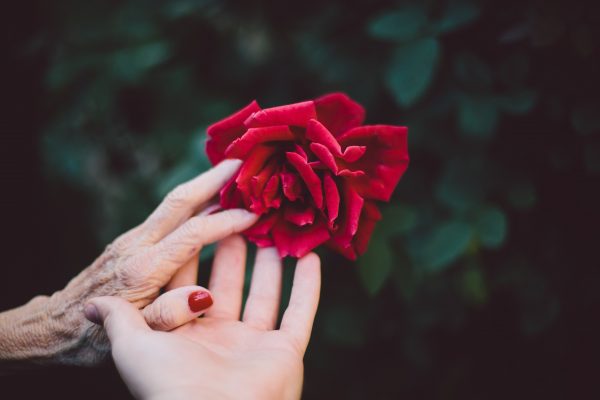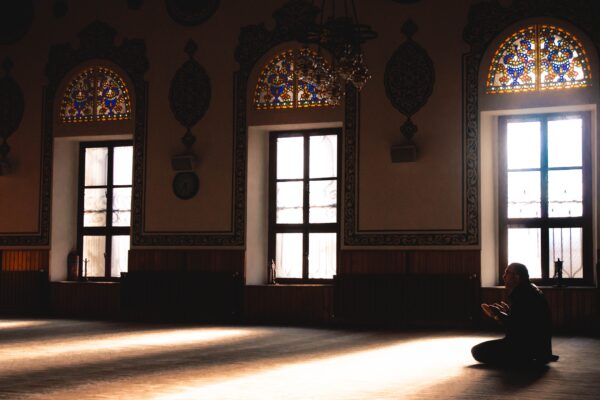“Have we allowed ourselves to be confused about not discriminating between good and bad? Have we stopped making the Qur’anic outlook relevant to our lives and communities?”
“Have we allowed ourselves to be confused about not discriminating between good and bad? Have we stopped making the Qur’anic outlook relevant to our lives and communities?”
The Noble Qur’an is our great book of guidance, doctrine, and belief. It’s God’s revelation and speech to us, full of signals and embedded meanings for us to fathom and reflect upon.
It requires us to be sensitive, loving readers to be able to discover and receive God’s deep ethical and beauty messages at the same time. These are the very two aspects or dimensions of meaning that I want to reflect upon in certain passages in surat Fatir (The Originator, 35).
Diversity As Beauty In All Creation
Two core verses in the heart of the surah (27, 28) explicitly and by illustration invite us to notice and rejoice in the aspect of diverse forms of beauty in all creation, specifically colors:
“ألم ترَ أن الله أنزل من السماء ماءً فأخرجنا به ثمراتٍ مختلفاً ألوانُها، ومن الجبال جُدَدُ بيضٌ وحمرٌ ومختلفٌ ألوانُها غرابيبُ سود. ومن الناسِ والدوابِ والأنعامِ مختلفٌ ألوانُه كذلك”
“Do you not see that Allah sends down rain from the sky, with which We bring forth fruits of varying colors? And in the mountains are tracts, of white, red, and varying hues, and [some] raven-black? And among people, beasts, cattle there are, likewise, those of various colors.”
The emphasis on different and various colors conveys the sensory perception of the world’s beauty and appreciation of its diversity at the same time. It’s a double message of both aesthetics and ethics: through enjoying the diverse beauty of God’s creation, we also get a subtle message of the basic principle of equality in difference.
There are several other Qur’anic verses in other surahs that also refer to different colors as something wonderful and beautiful to reflect upon the significance of their existence (e.g. 30:22; 16:13; 16:69; 39:21).
Focusing on surah 35, we notice verse 12 that also via illustration conveys this idea: God has created two kinds of seas or bodies of water, one sweet to drink from, and one salty and bitter, yet from each we can equally eat fresh meat or fish and extract ornaments to wear, and ships sail through them just the same:
“وما يستوى البحران هذا عذبٌ فراتٌ سائغٌ شرابُه وهذا مِلحٌ أجاجٌ ومن كلٍ تأكلون لحما طريا وتستخرجون حليةً تلبَسونها وترى الفلكَ فيه مواخِرَ لتبتغوا من فضله ولعلكم تشكرون.”
Notice the verse uses at the beginning the term “not equal are the two seas,” meaning they appear as not the same in their forms and constituent elements, yet they are of equal value. So differences and diversity in appearance and types of creation are to be celebrated and enjoyed, and make us at the same time ponder the subtle message of equality.
Exactly the preceding verse 11 reminds us, as numerous verses in the Qur’an do, that God created human beings from “dust,” and from the male “drop,” and through “female bearing and giving birth,” and that He made us “pairs” or mates. We ought to see and reflect upon these connections within the surah that carries the Divine Name of Originator, meaning creator (of everything without precedence).
Males and females are biologically different, yet they have an equal role in fulfilling or embodying God’s miracle of creating human beings—similar to the “two seas,” different but of equal worth, and like the many different colors and hues in the world, equally beautiful.
Yet the surah uses the same term “not equal” (ma-yastawi) in another set of verses: “Not equal are the blind and the seeing, nor darkness and light, nor shade and scorching heat. Not equal are the living and the dead.” (19-22).
“وما يستوي الأعمى والبصير. ولا الظلماتُ ولا النور. ولا الظلُ ولا الحرور. ولا يستوي الأحياءُ ولا الأموات.”
Here we have a message of inequality, illustrated through contrasting metaphors for – as most interpreters explain – belief and disbelief, or knowledge and ignorance of God and the Revelation. Particularly these two metaphors of the “seeing” vs. “the blind” and the related one of “light” vs. “darkness” – in addition to the use of “not equal” – occur several times in the Qur’an in other surahs, to convey the notion of inequality when it comes to truth and falsehood, believing and rejecting faith, good deeds and evil deeds…etc.
Here, boundaries of differentiation or distinction need to be set clearly in our consciousness, not based on appearances or forms or colors, but on deeper values and principles. The Qur’anic metaphoric language here is remarkably apt and beautiful: using the image of sensory perception here again – the seeing and not seeing, light and darkness, feeling shade or heat – yet in order to bring the meaning of guidance vs. misguidance closer.
These cannot be confused or the difference between them blurred. Just as on one hand the surah invites us to perceive equal beauty and diversity in God’s creation, on the other, it emphasizes the importance of discriminating spiritual and ethical vision to recognize the inequality between right and wrong, truth and falsehood.
“The living and the dead” is also a metaphor for the basic difference and inequality between those whose hearts are alive with faith in God and can hear/recognize the truth of the Revelation, and those whose hearts are dead because they are covered with disbelief and are buried in the grave of ignorance and so cannot hear or be guided.
And in the same surah another verse (8) warns against this human tendency of self-deception or misperceiving a wrong as right: one who wrongly sees/perceives his own evil deed as fair/beautiful. “أفمن زُينَ له سوءُ عملِهِ فرآه حسنا”
Again, the warning against false appearances and the ethical laziness that may make people blur lines of demarcation between what’s right and what’s wrong, what’s morally beautiful and what’s morally ugly.
Acknowledging Diversity and Recognizing Right and Wrong
Sometimes, a surah would focus on a core message or embody it in various ways, with intra-textual links and echoes, demanding that we decode the subtlety, polishing our hearts and minds in the process to be receptive to both the beauty and the ethics of the Qur’an.
So, we ask ourselves: what is a surah or passage of verses trying to tell us, what is the message?
In this case, I think it’s keeping the balance between acknowledging diversity, difference, and plurality – on one hand – and recognizing the distinction between right and wrong. The many forms and colors of creation, this beauty that we see with our eyes, is there to guide us also to moral beauty and to nurture our spiritual vision as well.
This is the Qur’anic mizan, the scale of equitable measurement in everything. And this is the challenge for us to carry God’s amanah, the trust, of cultivating our moral sense and testifying to truth, ethics, and justice, with our hearts, awareness, and conscience—yet, without falling into the trap of being conceited, judgmental, or aggressive/coercive. We do this for purifying our own hearts mostly and to be able to meet Allah with a clear conscience.
Reaching this balance, this measurement has been and continues to be an inner struggle for us all, living in a complex, beguiling world, where ugly things sometimes can hide behind false appearances of acceptability and relative considerations obscure moral clarity.
Another lesson to receive and reflect upon as inspired by these sets of verses and their relations to each other, is how to make such derived meanings relevant in today’s living communities.
For example, how to recognize that the inferior status given to women on account of their ‘difference’ – or any other oppressed human group for that matter – is not right and is unjust. How to reject the use of ‘difference’ on account of constructed social and cultural ‘norms’ to perpetuate hegemony, privilege, and unequal power relations among people. How to care about the cause of justice, righteousness, and equal human dignity on this earth, for everyone.
The Qur’anic celebration of ‘colors’ relates to conditions of justice, ethical principles, and virtue. Let’s try not to confuse the two or allow spiritual blindness to make us ignore this Qur’anic verse as well:
“ولا تستوي الحسنةُ ولا السيئةُ ادفع بالتي هي أحسن.”
“The good deed and the evil deed are not equal” (41:34), followed by the recommendation of “repel by that which is better” – meaning, repel error with truth, evil with good, resist vice by practicing virtue yourself. Goodness will naturally prevail, but we need to be on its side.
Let’s ask ourselves: have we become lazy in not reflecting enough upon Qur’anic ethical principles and truthful, moral stances? Have we allowed ourselves to be confused about not discriminating between good and bad? Have we stopped making the Qur’anic outlook relevant to our lives and communities?
One thing we can do is try and work on clarity of our vision(s) – the physical, the spiritual, and the moral: appreciate diversity and believe in basic equality, while also recognizing the basic inequality of right and wrong, justice and injustice, halal and haram.
A famous du’a’ in the tradition that has been attributed to the Prophet (peace be upon him) by the scholar Abu Hamid al-Ghazali, is good to remember whenever one feels confused in today’s complicated world that’s full of ambiguities and moral vagueness: “O Allah! Enable us to see Truth as Truth and give us the ability to follow it. And show us falsehood as false and give us the ability to refrain from it.”
“اللهم أرنا الحق حقا وارزقنا اتباعه، وأرنا الباطل باطلا وارزقنا اجتنابه.”
So, let’s always ask God for this clear perception and guided consciousness, because in the end any consequences will be borne by each person on his and her own, for their own good or not: “Whoever sees clearly, it is to the benefit of his own soul; and whoever is blind, it is to its detriment” (6:104).
And let’s remember that we are commanded to testify for the morally right thing in God’s eyes.





